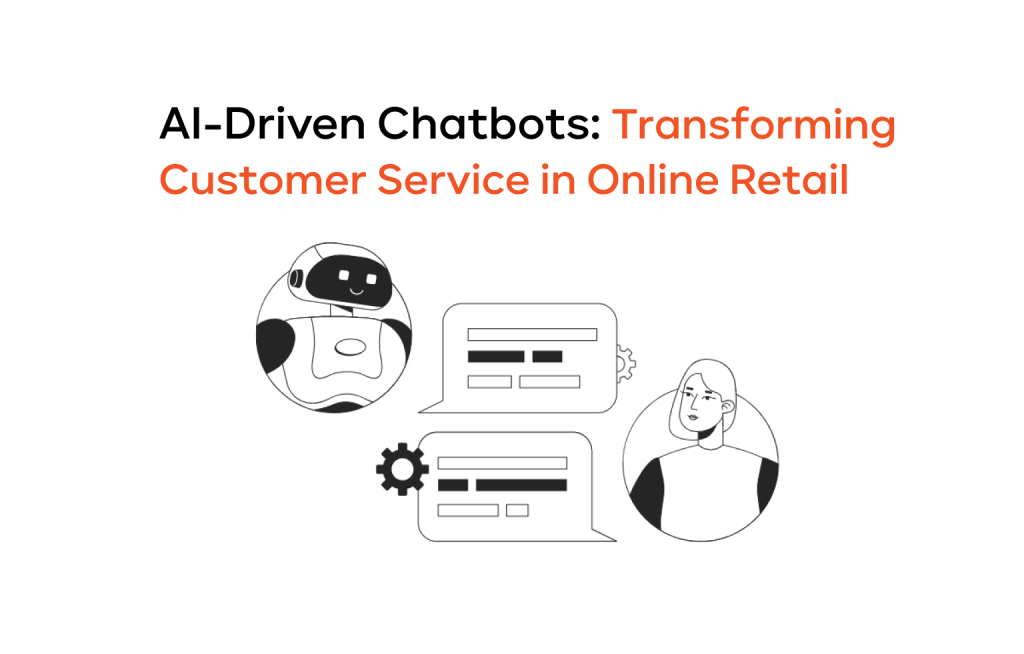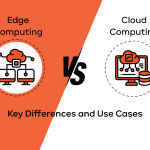Chatbot artificial intelligence has changed customer service in e-commerce. But what is AI chatbot phenomenon in the industry? Let’s find out.
Shoppers today crave instant help. They also want conversations that feel personal and human. Reports from Gartner show big growth in automated support. Traditional call centers rely on human teams with limited hours. But modern businesses must serve global audiences around the clock.
That’s where artificial intelligence in chatbot systems stand out. They handle tasks faster, learn from past cases, and reduce costs. If you run an online store, it’s time to see how AI-driven chatbots reshape the world of retail support.
The evolution of customer support in e-commerce
Online retail has exploded in recent years. People browse stores from phones and laptops. They place orders across different time zones. This always-connected lifestyle demands prompt answers. Simple phone or email support can’t always keep up.
The 24/7 expectations of modern shoppers
Shoppers expect around-the-clock support. Many are global shoppers who buy at odd hours. Others rely on mobile-first experiences to research and purchase on the go. If your team only works standard office hours, you risk losing sales. Slow responses are a serious drawback. That’s why more companies are embracing AI-powered chatbots. These virtual helpers remain active day and night. They also handle many chats at the same time. By providing quick, consistent responses, your store stands out.
Human support is costly, slow, and hard to scale
Staffing a full customer service team can cost a lot. Each agent requires training, a salary, and a workstation. In busy seasons, you often need temporary hires or overtime. That adds even more expense. Agents can also only handle a few conversations at once. Sometimes they need breaks. So, when you have a global audience, you face a big gap.
Manual support limitations become clear in these stressful periods. The cost of live agents might skyrocket, and it’s not easy to cut back. By contrast, a chatbot using artificial intelligence can adapt in real time. The bot answers routine queries and learns from them, saving time and money.
Rise of AI-driven chatbots as a key support automation tool
AI and chatbots are changing how retailers help their customers. In older setups, a bot used scripted answers. It couldn’t learn or adapt. New systems are different. They use natural language models that recognize speech patterns. The bot understands what you say and can improve its approach with each exchange. By spotting patterns, an AI-based chatbot refines its logic and responses. This means it gets better with age, like a seasoned support rep. When faced with high chat volume, a chatbot using AI never slows down. It juggles multiple threads, pulling info from existing data sets.
Quick statistics
- Experts say that 80% of customer interactions will be handled by bots by 2030.
- Chatbots cut support costs by up to 30% in many companies.
- Statista shows that businesses spend billions on AI solutions, and that figure is growing fast.

The pain points of traditional support systems
Even the best human-driven service can break under strain. Let’s look at specific issues that plague old-school methods.
Long response times and inconsistent service
During peak seasons or sales, customers flood your support queue. With limited staff, wait times surge. Agents hurry through tasks. Mistakes happen, and customers feel ignored. People want simple answers to simple questions, fast.
A single agent might handle a few queries at once, but that’s still limited. Chatbots, on the other hand, reply in seconds. They also keep track of each inquiry. That ensures consistent results no matter how busy you get.
Difficulty scaling during peak hours or holiday seasons
Black Friday and Christmas bring huge sales potential. They also generate swarms of support requests. Support bottlenecks form as tickets pile up.
If your customer base is large, you might need many agents on call. Hiring and training them takes time, plus there’s always a chance of errors or absenteeism. Meanwhile, shoppers today won’t wait hours for a response. Scaling customer service with chatbot artificial intelligence is much easier. The chatbot doesn’t get tired or require lunch breaks.
High operational cost of support teams
When you rely on live agents alone, you pay for salaries, overhead, software licenses, and more. If you expand overseas, you might open new call centers. These costs add up. But an AI-powered chatbots system needs fewer physical resources. This lowers your expenses while boosting your coverage. You can reserve your expert agents for complex tasks. Let the chatbot handle basic questions. The result is better usage of your budget.
Lack of data on customer intent and journey
Traditional channels often leave you with messy or unstructured data. Phone calls are not easy to analyze at scale. Email threads get buried in inboxes. As a result, it’s hard to track customer habits or what leads to a sale.
A chatbot artificial intelligence system stores interaction logs in a structured way. Managers can see which products people search for most. They can also spot which queries or patterns appear often. This helps refine marketing, inventory, and user experience strategies.
_______________________________________________________________________
Do you want to transform your e-commerce support?
Our experts at IT-Magic specialize in chatbot artificial intelligence and can tailor solutions to your needs. We use AWS to power scalable and secure AI software that fits modern digital retail demands.
_______________________________________________________________________
What AI chatbots bring to the table
A well-built AI-enabled chatbot does more than replace basic support staff. It opens new possibilities for personalization and analytics. It also lets you scale to meet global demands.
Always-on, instant, multilingual support
A store that sells worldwide must handle inquiries from many regions. Different languages can cause delays if you don’t have bilingual staff. But chatbots and artificial intelligence can use advanced language translation capabilities. They auto-detect user preferences and respond in the correct language.
These conversations happen at any hour, thanks to automated uptime. This sense of human touch, delivered through machine technology, makes shoppers feel appreciated. And they don’t have to wait.
Personalized answers based on user profile, behavior, and history
Buyers like brands that remember them. If someone has purchased from your site before, they expect you to know their past orders. A chatbot using AI can link to CRMs and recommend products by analyzing order history. With data on browsing patterns, it can guess what a user might like next. Shoppers feel seen and guided. That kind of customized care boosts loyalty and repeat business.
Seamless handoff to human agents when needed
No system can answer every question. Sometimes a shopper has a unique request that needs a human agent. A smart AI-based chatbot can tell when it’s stuck. It then transfers the conversation to a live person, often in the same chat interface.
This approach, known as omnichannel support, keeps things smooth. The user doesn’t have to repeat their issue. The agent sees the transcript and can jump right in.
Sentiment detection, intent recognition, and smart escalation logic
Today’s bots do more than parse words. They can sense emotion using sentiment detection. If a user sounds angry, the bot might escalate them sooner. This approach turns potential rants into quick solutions.
Tools like Amazon Lex let bots decode complex phrases. They also handle natural language input better than before. After each session, the bot learns from mistakes and updates its knowledge base. This cycle of improvement keeps the bot current and ready to serve.
Integration with CRMs, ERPs, order tracking systems
A chatbot shines when it plugs into the platform that fuels your store. That could be Shopify, Magento, or a custom ERP.
By pulling from live databases, your bot can answer, “Is this item in stock?” or “Where’s my order?” in a flash. The user stays on your site and gets their reply right away. This frictionless approach fosters trust. It also boosts efficiency for your support team.
Use cases of AI chatbots in e-commerce
Many retailers see chatbots as fancy FAQ tools. But these systems can do much more.

Order status and tracking
“Where’s my package?” is a top complaint for many online stores. An AI-enabled chatbot can pull shipping details from your logistics provider. Shoppers get tracking updates, estimated arrival times, and confirmation messages in seconds.
Product recommendations and search assistance
Sometimes users aren’t sure what they want. A chatbot can act like an in-store helper. It may suggest items that fit a user’s style or budget. It can also filter items by category or brand, then share quick links. If someone viewed something last week, the bot might remind them about it. This targeted approach can increase cart size.
FAQ automation (returns, policies, shipping)
Basic queries consume a big chunk of support resources. For example, “How do I return a product?” or “What are my shipping options?” A well-designed bot can handle 60–80% of these. You save your skilled agents for more complicated tasks. The buyer also gets an immediate response.
Cart recovery nudges
Many shoppers add items to their cart and leave without completing the purchase. A chatbot can send a gentle reminder. It might offer a small discount or a free shipping code. These prompts often bring people back, boosting revenue.
Post-purchase support
After checkout, customers may have questions about setup, warranties, or refunds. A chatbot can share how-to guides or direct users to the right return form. If the issue is complex, the bot escalates it. This dynamic approach keeps your brand image positive. People appreciate quick post-sale service.
AWS-powered chatbot architecture: what it looks like
AWS provides a robust toolset for chatbot artificial intelligence. Below is a table that outlines some key services and their roles.
| AWS Service | Role in Chatbot Architecture |
| Amazon Lex | An NLP engine that interprets text or voice input. Integrates well with Amazon Connect. |
| AWS Lambda | Stateless functions that handle logic, data fetching, and responses. |
| Amazon Connect | Connects digital interactions and live agents in one platform. |
| DynamoDB / Aurora | Stores conversation history, user sessions, and relevant info. |
| CloudWatch + X-Ray | Tracks performance metrics and helps diagnose issues in real time. |
| IAM roles, VPC, encryption | Protects resources. Ensures compliance with strict data security standards. |
Here’s how it works. The user types a query. Amazon Lex interprets their language input, understanding the intent. AWS Lambda then runs the code needed to provide a response. The logic might check a CRM for shipping updates or query an ERP for inventory. The user gets a fast, relevant update. Everything is monitored in CloudWatch, so you can see usage spikes or spot errors.
How IT-Magic builds scalable AI chatbots
Our team takes a thorough approach to chatbot artificial intelligence development. We follow key steps to ensure the end result works well in real-world e-commerce.
- Define scope
We map user journeys, create fallback rules, and list sample utterances. This helps the bot handle many possible questions. - Multi-region deployment
AWS operates data centers worldwide. We set up your bot in multiple zones. That way, if one region goes down, your service stays online. - CI/CD pipeline
Regular updates keep your bot fresh. Our team uses GitHub Actions or Terraform to package and test each version. This avoids downtime and errors. - API integration
We connect the chatbot to Shopify, Stripe, Magento, or internal systems. That means real-time updates on stock, shipping, or order status. - Real-time dashboards
Tools like QuickSight or Grafana track your bot’s performance. You can see request volume, success rates, or chat durations. - Compliance
We design solutions with GDPR, PCI DSS, and other rules in mind. Data encryption, role-based access, and logging keep you safe.
Challenges to be aware of
No technology is perfect. AI-enabled chatbots need ongoing care to stay at their best.
- NLP Complexity
People use slang, typos, and mixed languages. The bot must be trained to handle these cases. - Bot fatigue
Not every question should remain in a loop. Users want the option to speak with a human if needed. - Continuous improvement
Products and trends change. Your chatbot should evolve with them. Regular reviews and A/B tests help maintain accuracy. - Cost monitoring
Serverless systems can spike in cost if usage soars. AWS budget alerts help you watch expenses.
Measuring success
How do you know the chatbot has made a difference? Look at a few key metrics:
- KPIs: time to resolve an issue, ticket deflection rate, and user satisfaction (CSAT).
- Cost savings: drop in monthly expenses after the bot takes over basic tasks.
- Faster resolutions: compare how fast the chatbot addresses certain questions vs. a live agent.

Final thoughts: future-proofing retail support with AI
E-commerce moves fast. Complex demands require quick solutions. With chatbot artificial intelligence, you can meet shoppers on their terms – fast, accurate, and available at any hour.
Early adopters stay ahead of the curve. They also cut costs and improve service. By tapping technology that’s built to scale, you set your store up for success. As the market evolves, so will your bot. This adaptive power is crucial in a world where trends shift overnight.
Get in touch to design a smart support assistant tailored to your store
AI for chatbots can transform your support strategy. Learn how our AWS expertise can enhance your customer experience. Let’s build solutions that help you save time and money.
FAQ
Can AI chatbots really understand what customers want?
Yes. They use natural language processing and sentiment detection to grasp meaning, even with common errors or slang. They also draw from past conversations to refine responses.
How secure is an AI chatbot system built on AWS?
AWS makes security a priority. IAM roles control access, and encryption safeguards data in transit and at rest. You can also meet GDPR and PCI DSS rules by configuring your platform with best practices.
How long does it take to deploy a fully functional AI chatbot?
For simple projects, an initial version might launch in 2-4 weeks. More complex setups with multiple APIs or deeper human workflows can take a bit longer. But the payoff in customer satisfaction is huge.




